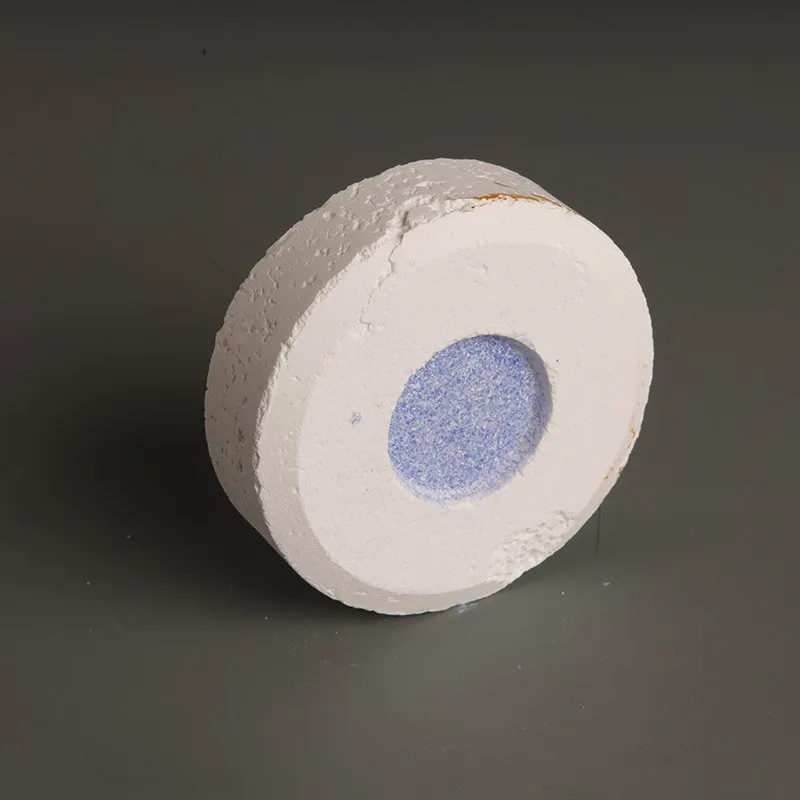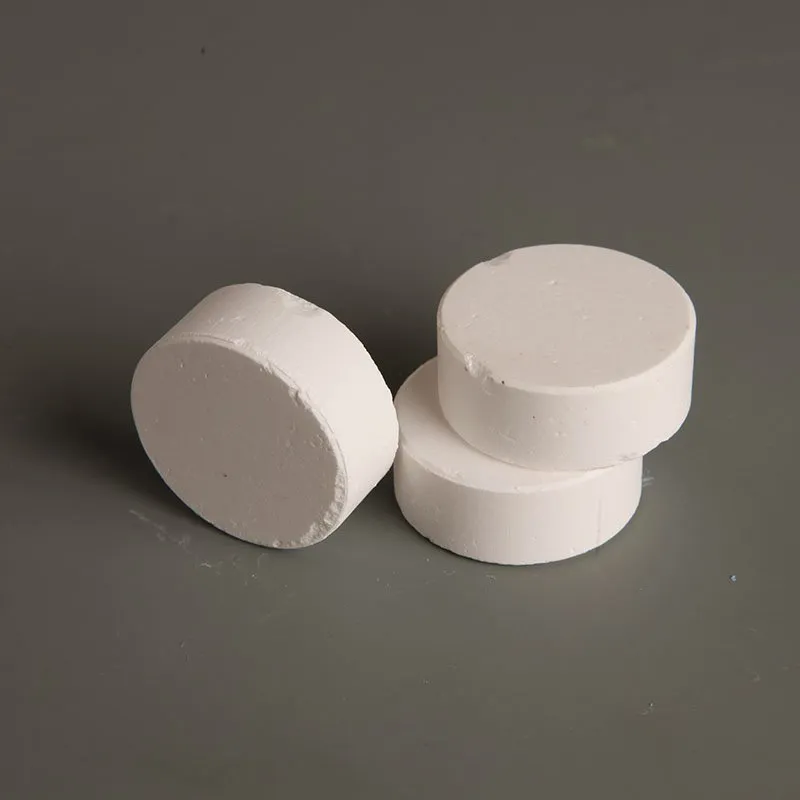



Water Treatment Plant Chemicals: Polyelectrolytes & Polymers
Navigating the Evolving Landscape of Water Treatment Plant Chemicals
The global demand for clean water, driven by population growth, industrialization, and environmental regulations, places immense pressure on water treatment infrastructure. This increasing complexity necessitates sophisticated and reliable water treatment plant chemicals. These chemical agents are fundamental in various processes, including coagulation, flocculation, disinfection, pH adjustment, and odor control, ensuring the delivery of safe and potable water or compliant industrial discharge. Key trends in this sector include a shift towards more sustainable, eco-friendly formulations, enhanced efficiency to reduce operational costs, and the development of specialized chemicals to address emerging contaminants like microplastics and pharmaceutical residues. Understanding these dynamics is crucial for plant operators and industry stakeholders aiming for optimal performance and regulatory compliance.
Manufacturers are continuously innovating, focusing on chemicals that offer superior performance with lower dosages, minimizing sludge production, and improving overall plant throughput. The integration of advanced analytics and real-time monitoring systems also influences the selection and application of these chemicals, moving towards more precise and adaptive dosing strategies. This evolution underscores the importance of choosing high-quality, specialized chemicals and partnering with suppliers who can provide technical expertise and tailored solutions to meet specific treatment challenges. The market for these chemicals is characterized by stringent quality control and a focus on chemicals certified for specific applications, such as those meeting NSF/ANSI standards for drinking water.
Manufacturing Excellence: The Genesis of Effective Water Treatment Chemicals
The efficacy of chemicals like Sodium Dichloroisocyanurate (SDIC) Granules/Tablets, a highly effective disinfectant, originates from a meticulously controlled manufacturing process. The raw materials, primarily chlorine, isocyanuric acid, and sodium hydroxide, undergo precise chemical synthesis involving chlorination and cyclization reactions in controlled environments. This multi-stage process ensures the formation of the desired chemical structure with high purity. Following synthesis, the crude product undergoes rigorous purification steps, often involving filtration and crystallization, to remove impurities and unwanted by-products, which is critical for achieving a high-grade product suitable for sensitive applications like drinking water treatment.
Post-purification, the product is dried and then processed into its final granule or tablet form. Granulation involves specialized equipment to create uniform, dust-free particles, while tabletting machines compress the powder into precisely weighted tablets, offering convenience and controlled release. Throughout this entire manufacturing chain, adherence to stringent quality control (QC) protocols is paramount. This includes in-process testing at each stage to monitor reaction completeness, purity levels, and physical properties such as moisture content and dissolution rate. Finished products are subjected to comprehensive analytical tests, including assays for active chlorine content, pH, heavy metals, and stability, ensuring they meet internal specifications and external regulatory standards such as ISO 9001 for quality management and NSF/ANSI 60 where applicable for drinking water applications. The typical shelf life for properly stored SDIC is 2-3 years, making it a stable and reliable choice for long-term inventory management.

These chemicals find widespread application across various industries. In municipal water treatment, they are vital for primary disinfection, ensuring pathogenic organisms are eliminated. In industrial settings, such as petrochemical and metallurgy, they are used for cooling water treatment to prevent biofouling and scale formation, thereby extending equipment lifespan and improving heat exchange efficiency. For wastewater treatment, they aid in effluent disinfection before discharge. Their advantages include superior disinfection efficacy, stability in storage, ease of handling, and broad-spectrum biocidal activity against bacteria, viruses, and algae, contributing to significant energy savings by preventing bio-corrosion and improving system performance. This meticulous production process guarantees that each batch of water treatment plant chemicals delivers consistent and reliable performance.
Technical Specifications and Parameters of Key Water Treatment Chemicals
Understanding the technical parameters of various water treatment plant chemicals is critical for optimal selection and dosing. Each chemical has specific properties that dictate its application and effectiveness. For instance, Sodium Dichloroisocyanurate (SDIC) is prized for its high active chlorine content and stability, making it superior to traditional chlorine sources in many contexts. Similarly, the performance of a polyelectrolyte in water treatment is defined by its charge density, molecular weight, and ionic nature (cationic, anionic, or non-ionic), which directly impacts its flocculation efficiency. These parameters are crucial for achieving desired results in coagulation-flocculation processes, promoting rapid settling of suspended solids and improving water clarity.
Below is a comparative table detailing key specifications for commonly used water treatment polymer and disinfectant chemicals, highlighting their typical forms, primary functions, and critical performance indicators. This data assists operators in making informed decisions, ensuring the selected chemicals are compatible with existing systems and achieve specific treatment goals while adhering to environmental and safety standards.
| Chemical Type | Product Form | Primary Function | Key Parameter/Spec | Typical Application pH |
|---|---|---|---|---|
| Sodium Dichloroisocyanurate (SDIC) | Granules, Tablets | Disinfection, Biocidal | Active Chlorine: 56-60%; Solubility: ~25g/100mL (25°C) | 6.0 - 9.0 |
| Poly-Aluminum Chloride (PAC) | Liquid, Powder | Coagulation, Flocculation | Al2O3 Content: 10-30%; Basicity: 40-90% | 5.0 - 9.0 |
| Polyacrylamide (PAM) - Anionic | Powder, Emulsion | Flocculation, Sludge Dewatering | Molecular Weight: 8-20 Million; Hydrolysis Degree: 10-30% | >7.0 |
| Caustic Soda (NaOH) | Liquid, Flakes | pH Adjustment, Neutralization | Purity: 30-50% (liquid), 99% (flakes) | Wide range (to increase pH) |
The selection of the appropriate drinking water treatment chemicals and industrial chemicals is a function of raw water quality, desired effluent standards, existing infrastructure, and cost-effectiveness. FIZACHEM's Sodium Dichloroisocyanurate (SDIC) products, for instance, are designed to offer a stable and highly effective disinfection solution for various water treatment applications, demonstrating consistent performance even in challenging conditions. The inherent stability of SDIC allows for prolonged effectiveness, providing a reliable backbone for disinfection protocols.
Application Scenarios and Technical Advantages
The versatility of water treatment plant chemicals allows for their deployment across a myriad of scenarios, from municipal potable water production to highly specialized industrial processes. In municipal drinking water treatment chemicals, disinfection is a cornerstone, preventing waterborne diseases. SDIC, with its stable chlorine release and long-lasting efficacy, is particularly advantageous in this context, providing a safer alternative to gaseous chlorine for smaller plants or emergency disinfection. Its application ensures residual chlorine levels are maintained, safeguarding water quality throughout distribution networks. Beyond disinfection, chemicals like coagulants (e.g., PAC) and flocculants (e.g., polyacrylamide) are essential for removing suspended solids, turbidity, and organic matter, significantly improving water clarity and reducing downstream filtration load.
In industrial wastewater treatment, the challenges are often more complex, involving diverse pollutants. Here, specialized water treatment polymer and inorganic chemicals are employed for heavy metal removal, oil-water separation, and BOD/COD reduction. For instance, in mining operations, polymers assist in tailings dewatering, while in the textile industry, specific chemicals are used to neutralize dyes. The technical advantages of advanced chemical formulations include enhanced removal efficiencies, reduced chemical consumption due to higher active ingredient concentrations, and minimized sludge volume, which translates to lower disposal costs. The use of robust chemicals also contributes to the longevity of treatment plant equipment by preventing scaling, corrosion, and biofouling, thereby reducing maintenance expenditures and ensuring continuous operation. FIZACHEM's SDIC products exemplify these advantages, providing cost-effective and reliable disinfection across various demanding environments.

For industrial cooling water systems, the prevention of biofouling and scaling is critical to maintaining thermal efficiency and avoiding costly shutdowns. Biocides like SDIC effectively control microbial growth, while anti-scalants prevent mineral deposition on heat exchange surfaces. These applications highlight the multi-faceted role of water treatment plant chemicals in ensuring operational efficiency, environmental compliance, and public health protection. The consistent performance of chemicals like SDIC even under varying environmental conditions underscores its technical superiority and makes it a preferred choice for reliable water treatment.
Manufacturer Comparison and Tailored Solutions
Selecting the right manufacturer for water treatment plant chemicals involves more than just price comparison; it requires a comprehensive evaluation of product quality, technical support, supply chain reliability, and customization capabilities. Leading manufacturers distinguish themselves through rigorous R&D, adherence to international quality standards (e.g., ISO 9001, ISO 14001), and a strong track record of successful client engagements. While many companies offer basic chemicals, only a few provide the expertise to develop truly tailored solutions addressing specific water chemistry challenges and operational constraints. For instance, some manufacturers might specialize in producing high-purity polyelectrolyte in water treatment for specific industrial applications, while others excel in broad-spectrum disinfection agents like SDIC for municipal use.
FIZACHEM stands out in the industry due to its unwavering commitment to quality and customer-centric approach. With over 15 years of experience in chemical manufacturing and supply, we have established a robust global presence, serving clients across diverse sectors including municipal waterworks, petrochemical, power generation, and food & beverage. Our Sodium Dichloroisocyanurate (SDIC) Granules/Tablets are produced under strict quality control, holding certifications that attest to their purity and efficacy. We not only provide premium products but also offer comprehensive technical consultation, aiding clients in optimizing dosing strategies and troubleshooting operational issues. This advisory capacity is crucial, as the optimal chemical solution is often site-specific, requiring precise adjustments in formulation or application methodology.

Our customized solutions extend to packaging options, logistics, and even specific product formulations when warranted by unique industrial requirements. We understand that a one-size-fits-all approach is rarely sufficient in complex water treatment scenarios. FIZACHEM's ability to provide high-quality drinking water treatment chemicals and industrial solutions, backed by authoritative testing data and a commitment to long-term partnerships, sets us apart from competitors who may offer lower-cost but less reliable alternatives. Our adherence to stringent FDA and NSF standards for relevant applications further reinforces our commitment to safety and quality, ensuring our products integrate seamlessly and effectively into critical water treatment processes.
Application Cases and Client Success Stories
The real-world impact of high-quality water treatment plant chemicals is best illustrated through successful application cases. One notable example involves a large municipal drinking water plant facing challenges with fluctuating raw water quality and the need for a reliable disinfection residual in their extensive distribution network. Traditional chlorine gas posed safety and handling concerns. By transitioning to FIZACHEM's SDIC Granules, the plant achieved consistent disinfection efficacy, maintaining optimal free chlorine levels throughout the network with improved safety protocols. This transition resulted in a 15% reduction in operational disinfection costs due to better chemical stability and reduced handling complexity, while simultaneously improving the overall safety profile for plant personnel. The plant reported enhanced water clarity and significantly reduced instances of coliform bacteria detection, underscoring the product's effectiveness as a drinking water treatment chemical.
In another instance, a major petrochemical facility struggled with severe biofouling in its cooling towers, leading to reduced heat exchange efficiency and increased energy consumption. After comprehensive analysis, FIZACHEM recommended a tailored biocide program utilizing a combination of shock dosing and continuous low-level application of SDIC and a specialized non-oxidizing biocide. Within three months, the plant observed a 90% reduction in microbial counts and a noticeable improvement in heat transfer rates, leading to significant energy savings and extended periods between costly maintenance shutdowns. This case highlights how precise application of specific water treatment polymer and disinfection chemicals can yield substantial economic and operational benefits, effectively mitigating complex industrial water challenges. Our clients consistently report high satisfaction due to the demonstrable improvements in water quality and system performance.
These success stories underscore the practical advantages and trustworthiness that FIZACHEM brings to the table. Our extensive experience across varied industries allows us to anticipate challenges and develop proactive chemical solutions. We provide detailed case studies and technical reports upon request, showcasing the measurable benefits achieved by our clients worldwide. Our commitment to supporting client operations extends to offering comprehensive post-sales service, including performance monitoring and ongoing technical adjustments to ensure sustained optimal results.
Ensuring Trust: FAQ, Delivery, and Support
Frequently Asked Questions (FAQ)
- Q: What makes FIZACHEM's SDIC superior to other chlorine sources?
A: FIZACHEM's SDIC offers higher active chlorine content (56-60%), superior stability against UV light and temperature fluctuations, and ease of handling in granular/tablet form, reducing safety risks associated with chlorine gas or liquid bleach. Its slower dissolution rate provides a more sustained disinfection effect. - Q: Are your drinking water treatment chemicals certified for potable water applications?
A: Yes, our Sodium Dichloroisocyanurate (SDIC) products meet stringent international standards and can be certified to NSF/ANSI 60 for drinking water treatment chemicals, ensuring safety and compliance for municipal and public water supplies. Specific certifications depend on the region and client requirements. - Q: Can FIZACHEM provide customized chemical solutions for unique industrial wastewater challenges?
A: Absolutely. We have a team of experienced chemists and engineers who can analyze your specific water matrix and treatment goals. Based on this, we can formulate or recommend a tailored blend of water treatment plant chemicals, including specialized polyelectrolyte in water treatment or other agents, to achieve optimal performance and cost-effectiveness.
Delivery Cycle and Logistics
FIZACHEM maintains a robust global supply chain network to ensure timely and efficient delivery of all our water treatment plant chemicals. For standard orders, our typical lead time is 7-14 business days from order confirmation, depending on destination and volume. We utilize strategically located warehouses and work with reputable logistics partners to minimize transit times and ensure product integrity upon arrival. For urgent requirements or large-scale projects, we offer expedited shipping options and dedicated project management to coordinate logistics seamlessly. Our packaging is designed to comply with international hazardous material transport regulations, guaranteeing safe handling and delivery.
Quality Assurance and Customer Support
Our commitment to quality is upheld by a comprehensive quality management system, including ISO 9001 certification. Every batch of product undergoes rigorous testing before dispatch, with Certificates of Analysis (CoA) provided for full transparency. We offer a standard one-year warranty on all products, guaranteeing they meet specified parameters upon delivery and under proper storage conditions. Our dedicated customer support team is available to assist with technical queries, product application guidance, and troubleshooting. We believe in building long-term partnerships, providing continuous support and insights to help our clients achieve their water treatment objectives efficiently and sustainably. This holistic approach reinforces our position as a trusted partner in the field of water treatment plant chemicals.
References
- World Health Organization. Guidelines for Drinking-water Quality. 4th Edition. 2017.
- United States Environmental Protection Agency. Drinking Water Contaminant Candidate List.
- Water Environment Federation. Manual of Practice No. 8, Design of Municipal Wastewater Treatment Plants. 5th Edition. 2008.
- National Sanitation Foundation (NSF) International. NSF/ANSI Standard 60: Drinking Water Treatment Chemicals – Health Effects.
- American Water Works Association. Water Quality and Treatment: A Handbook on Drinking Water. 6th Edition. 2011.
-
Why Sodium Persulfate Is Everywhere NowNewsJul.07,2025
-
Why Polyacrylamide Is in High DemandNewsJul.07,2025
-
Understanding Paint Chemicals and Their ApplicationsNewsJul.07,2025
-
Smart Use Of Mining ChemicalsNewsJul.07,2025
-
Practical Uses of Potassium MonopersulfateNewsJul.07,2025
-
Agrochemicals In Real FarmingNewsJul.07,2025
-
Sodium Chlorite Hot UsesNewsJul.01,2025










